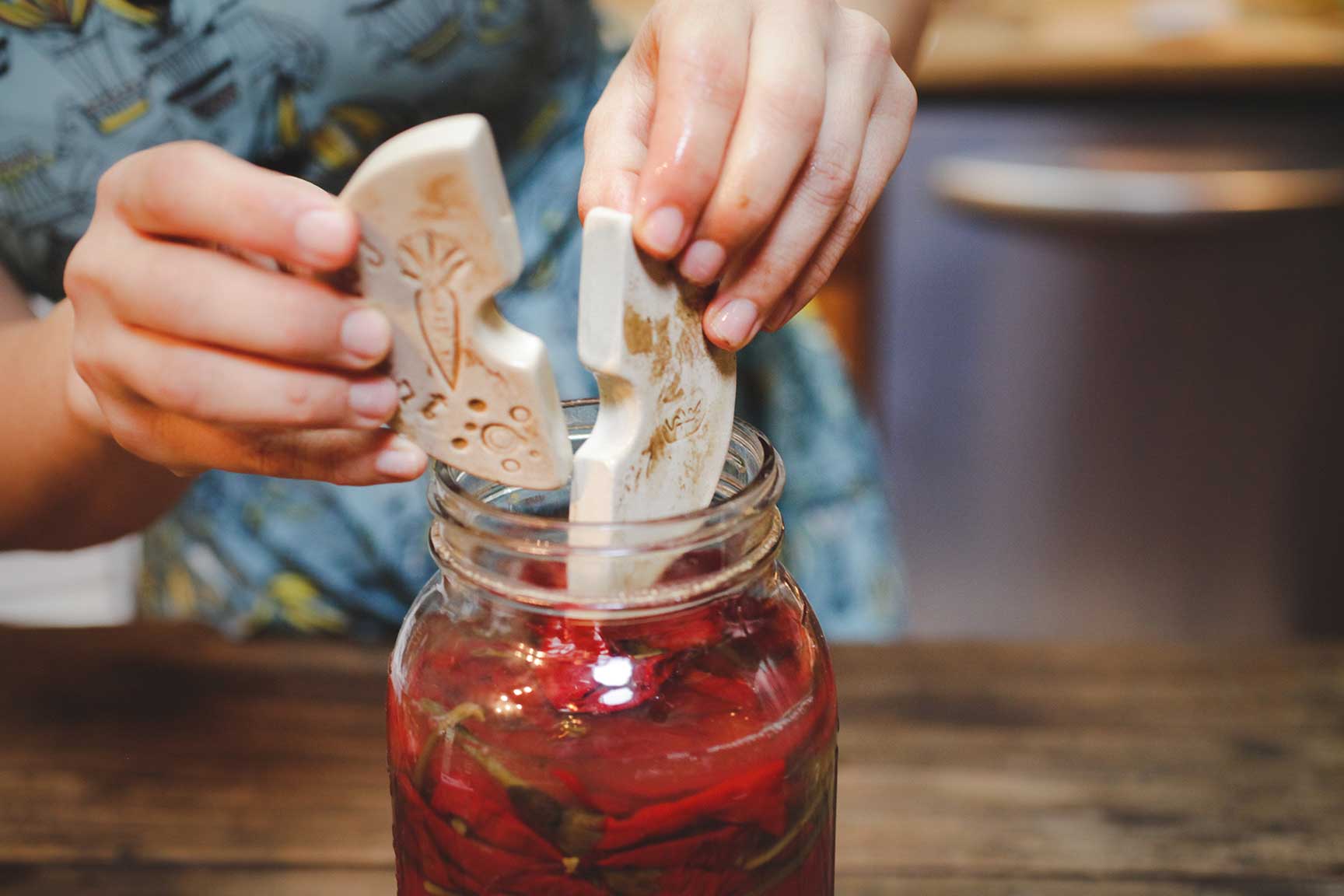- Continue Shopping
- Your Cart is Empty
Fermentation FAQ: What is the cloudy film in my ferment? Is it safe?

Your ferment can be contaminated in a number of ways. One of the most common visible contaminations is a white, cloudy substance called Kahm Yeast. While Kahm yeast isn't harmful it can indicate that there is a problem with your ferment.

Kahm yeast is actually safe to eat as long as there are no molds present and the ferment tests at a pH of 4 or lower. Kahm yeast however can cause a disagreeable flavor or aroma. If your ferment does not smell pleasing to you it will most likely not get eaten so disposing of it in the compost might be the best bet. If you are unsure of what is contaminating your ferment it is also advised to dispose of it and start over. When in doubt throw it out!

The ferment on the left is healthy while the ferment on the right is contaminated with Kahm Yeast.
Common causes of Kahm Yeast
Incorrect Headspace
Overflow of brine
Evaporation of water causing loss of air seal and exposure to oxygen

Monitor kahm yeast growth
Kahm yeast creates place for mold to grow. Scrape any visible yeast off of the top of your ferment with a clean utensil as soon as you see it form. Once it forms it usually continues to grow. Watch your contaminated ferment very closely and continue to clean away yeast everyday if needed. You many need to add more fresh brine. Make sure your vegetables are always submerged under the brine.
How to repack a ferment that has already been started
1) Drain your contaminated ferment
If the ferment is contaminated but still seems appetizing you can drain the brine entirely and rinse your vegetables with cool fresh water. 
2) Wash all of your equipment and jar in hot soapy water.
3) Repack your jar with the vegetables
You might need a smaller jar than when you started depending on the vegetables you are fermenting. These peppers have become soft during the ferment and are taking up much less space than they did originally.
4) Make a fresh brine
When repacking a ferment that has already started, cover your vegetables with a bit less saline brine than you started with. Use a 3% brine (1 tsp salt: 1 pint H2O). Cover your vegetables with fresh brine making sure to leave 1" of headspace.
5) Reaffix your fermentation device and allow to ferment 1-2 weeks or to desired flavor

Over to You
It’s part of our mission here at Mountain Feed to help you make delicious, sustainable, homemade food more often. Stop by and say hello on Facebook, Twitter, Instagram or Pinterest. Or, as always, you can do it the old fashioned way and come by the store to speak with one of our in-house experts.
